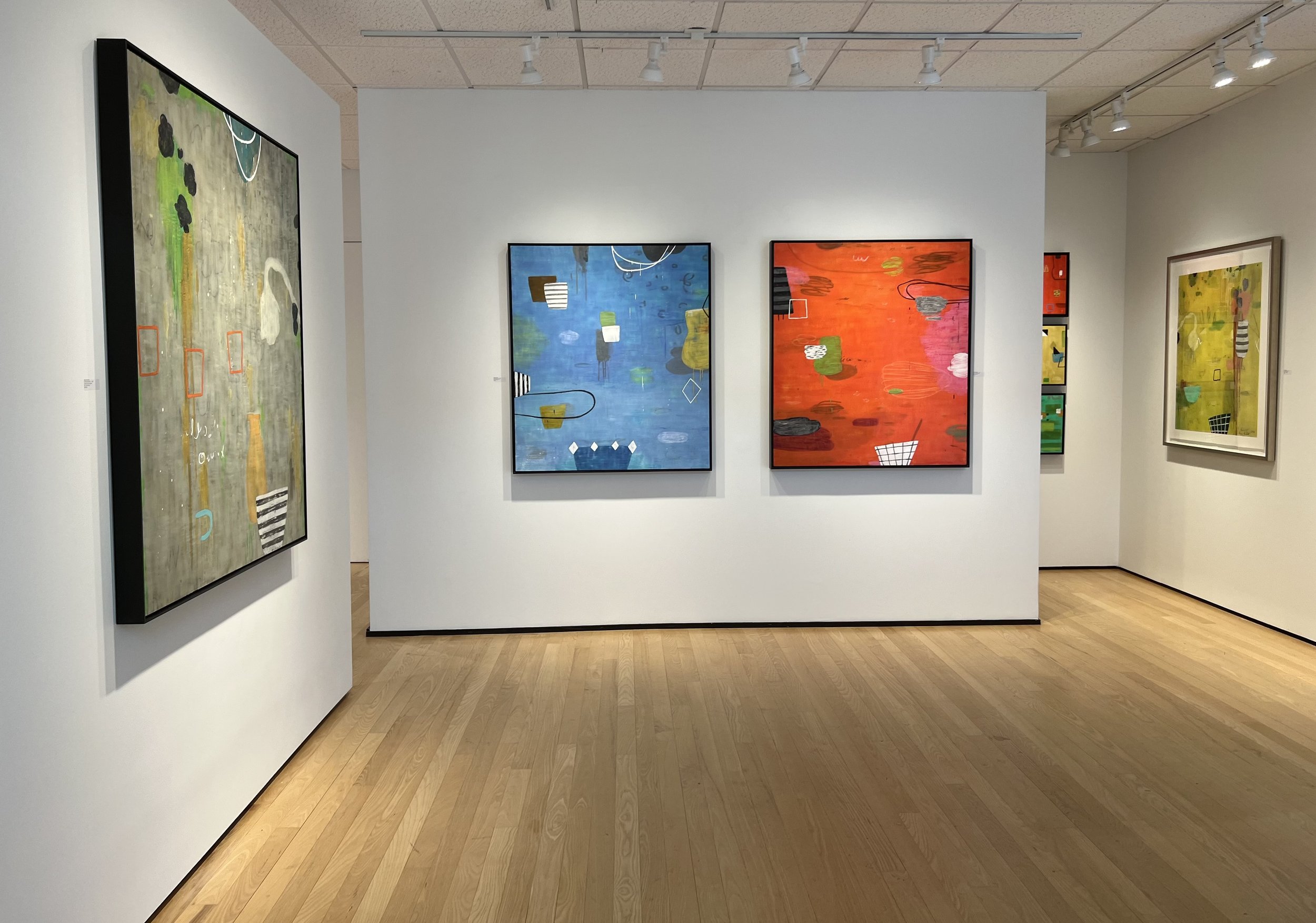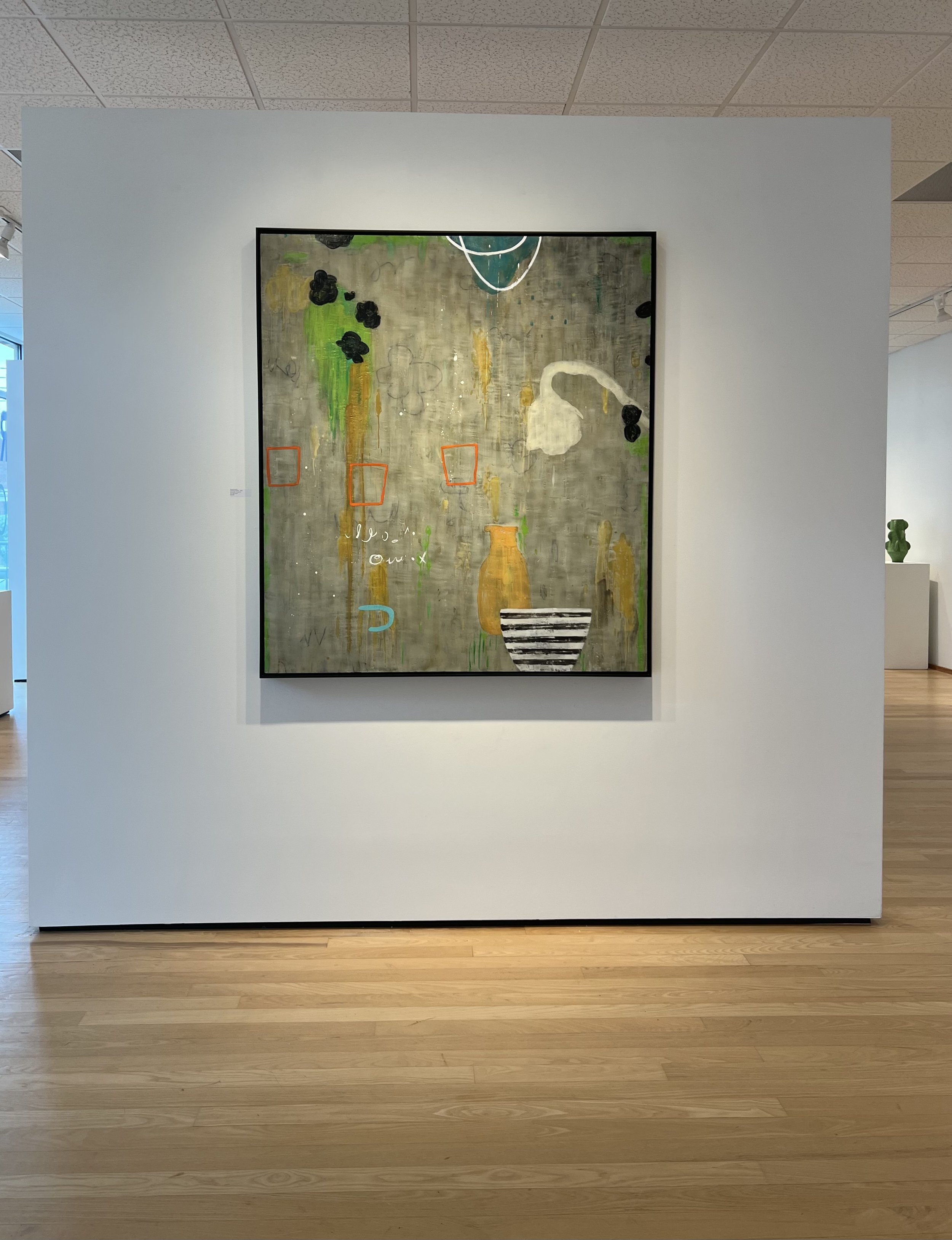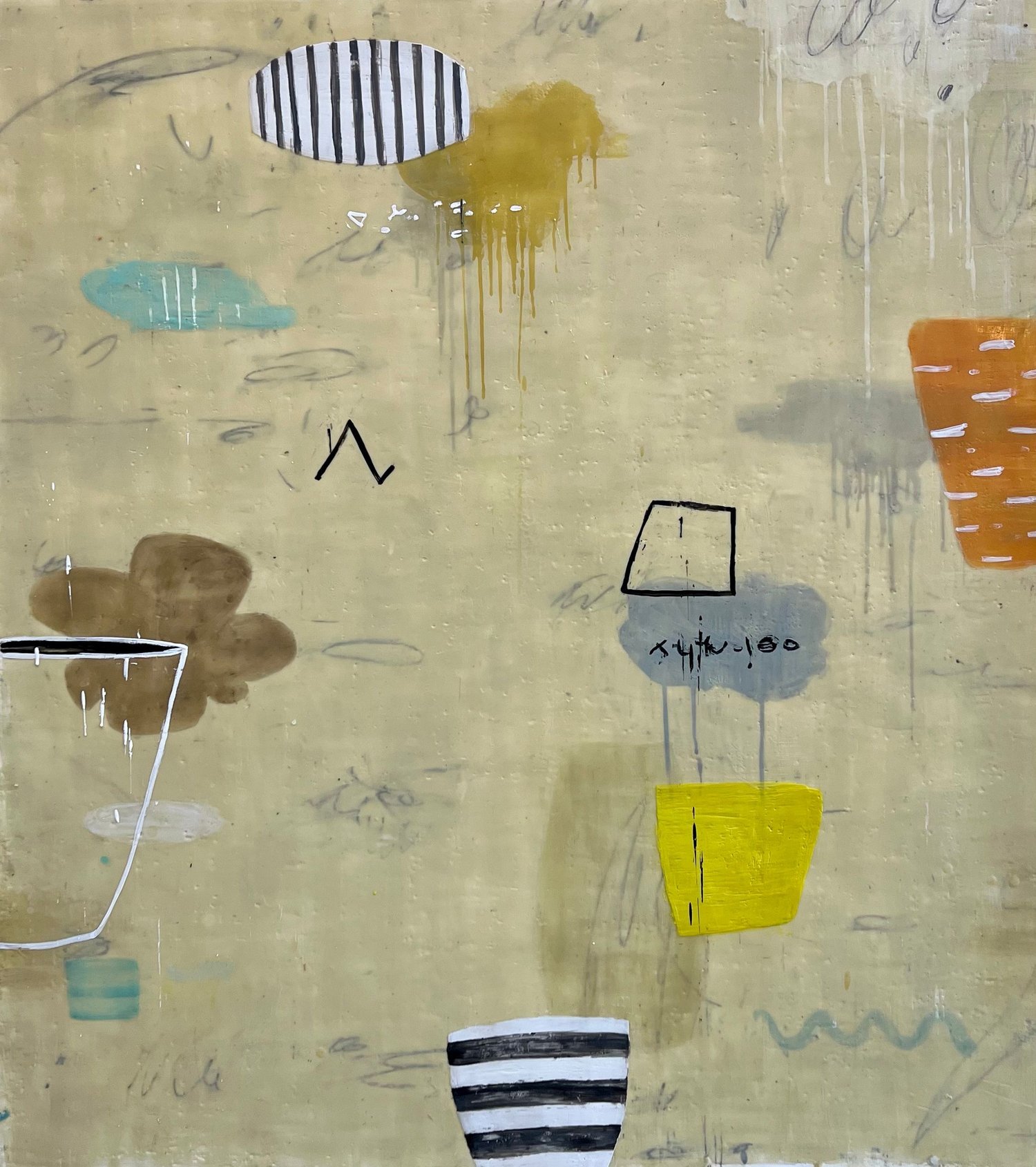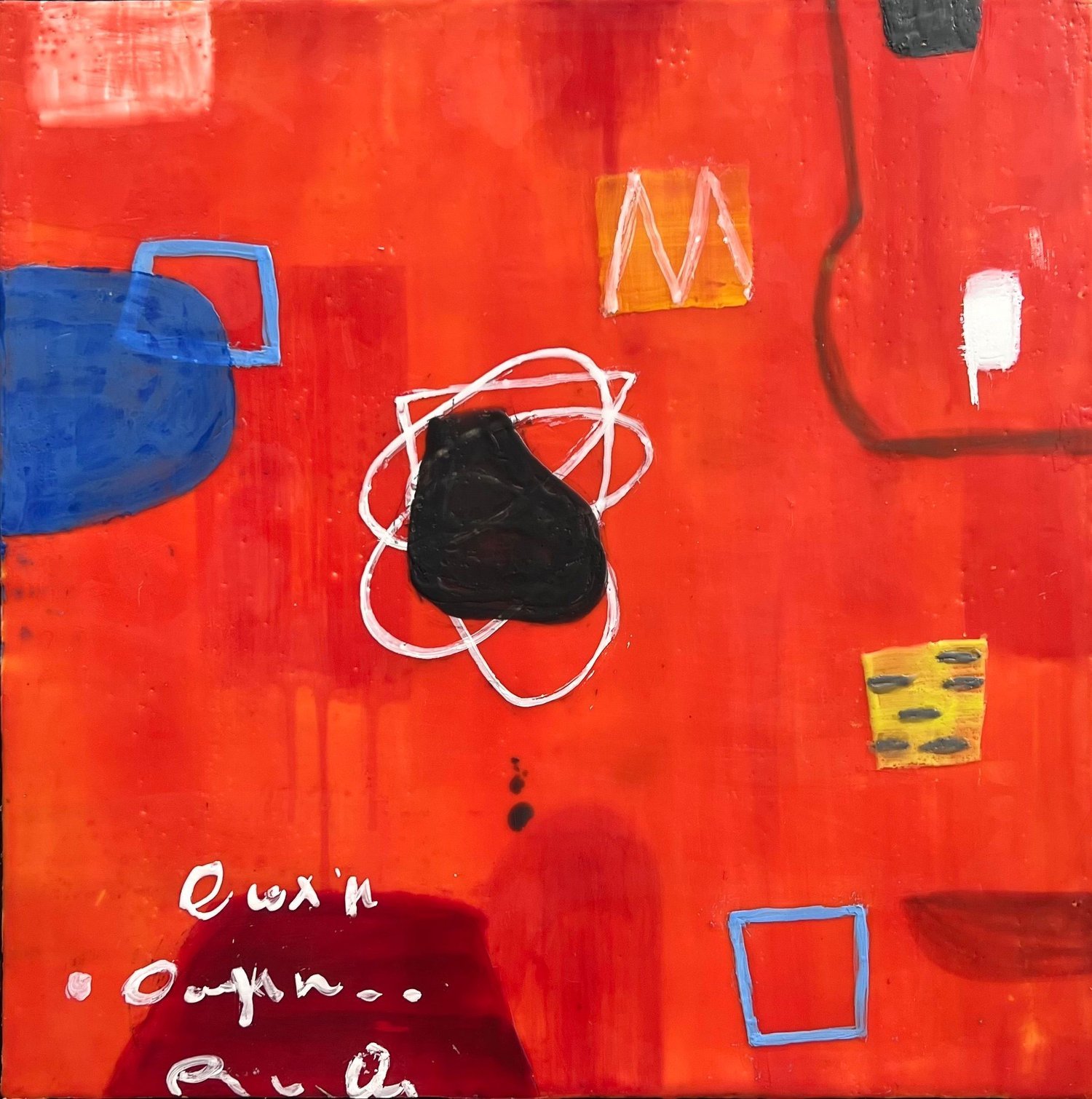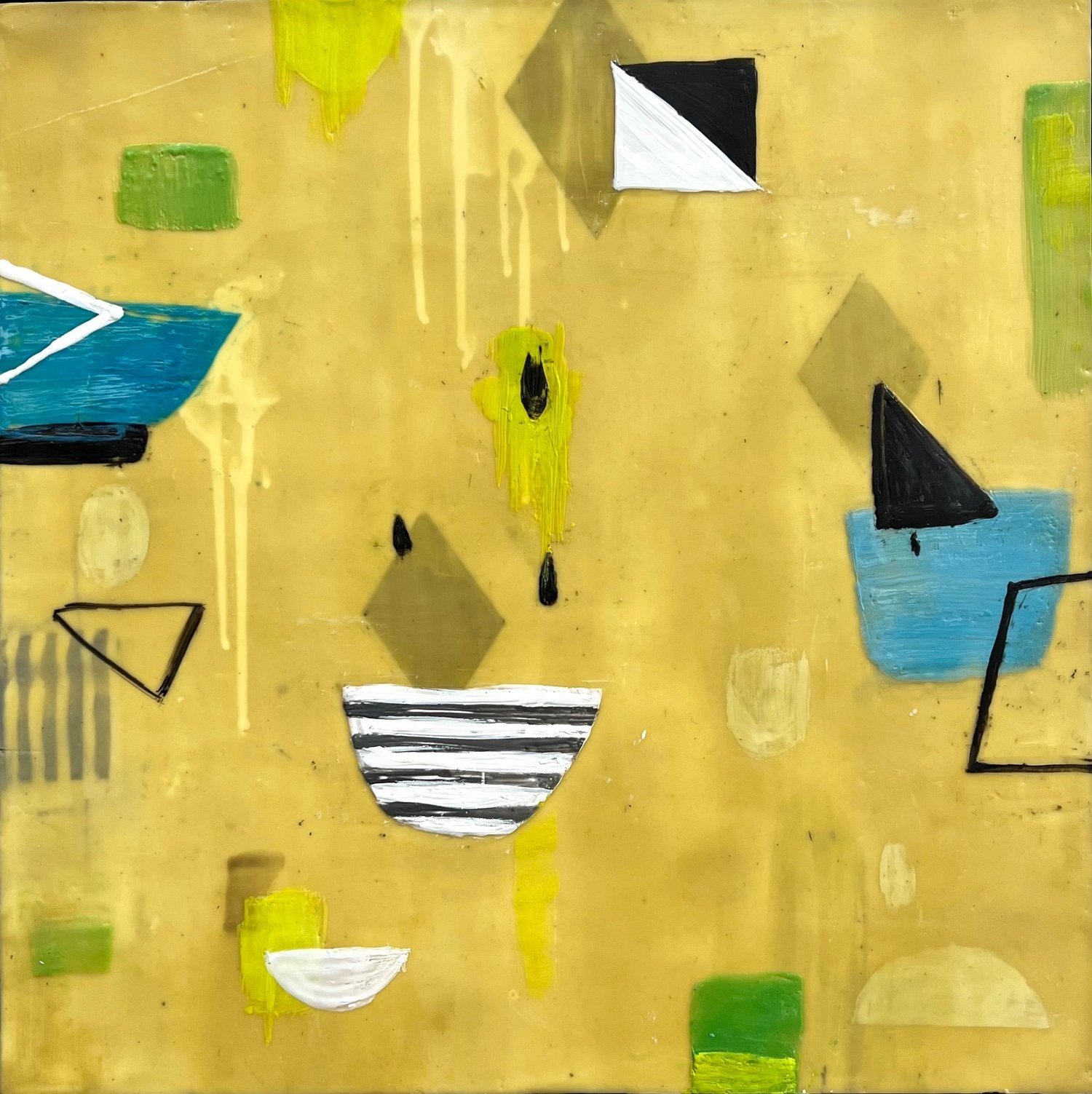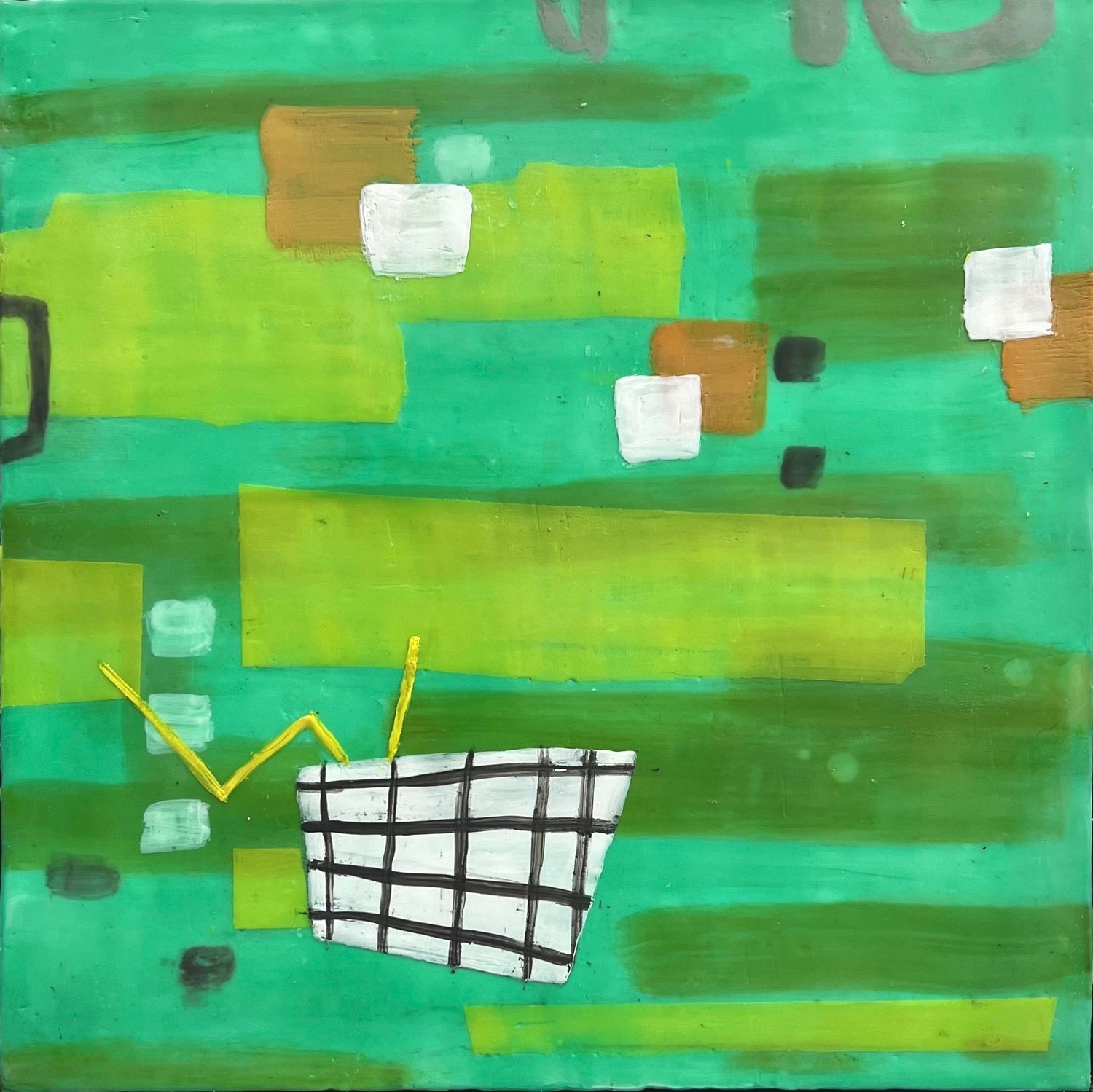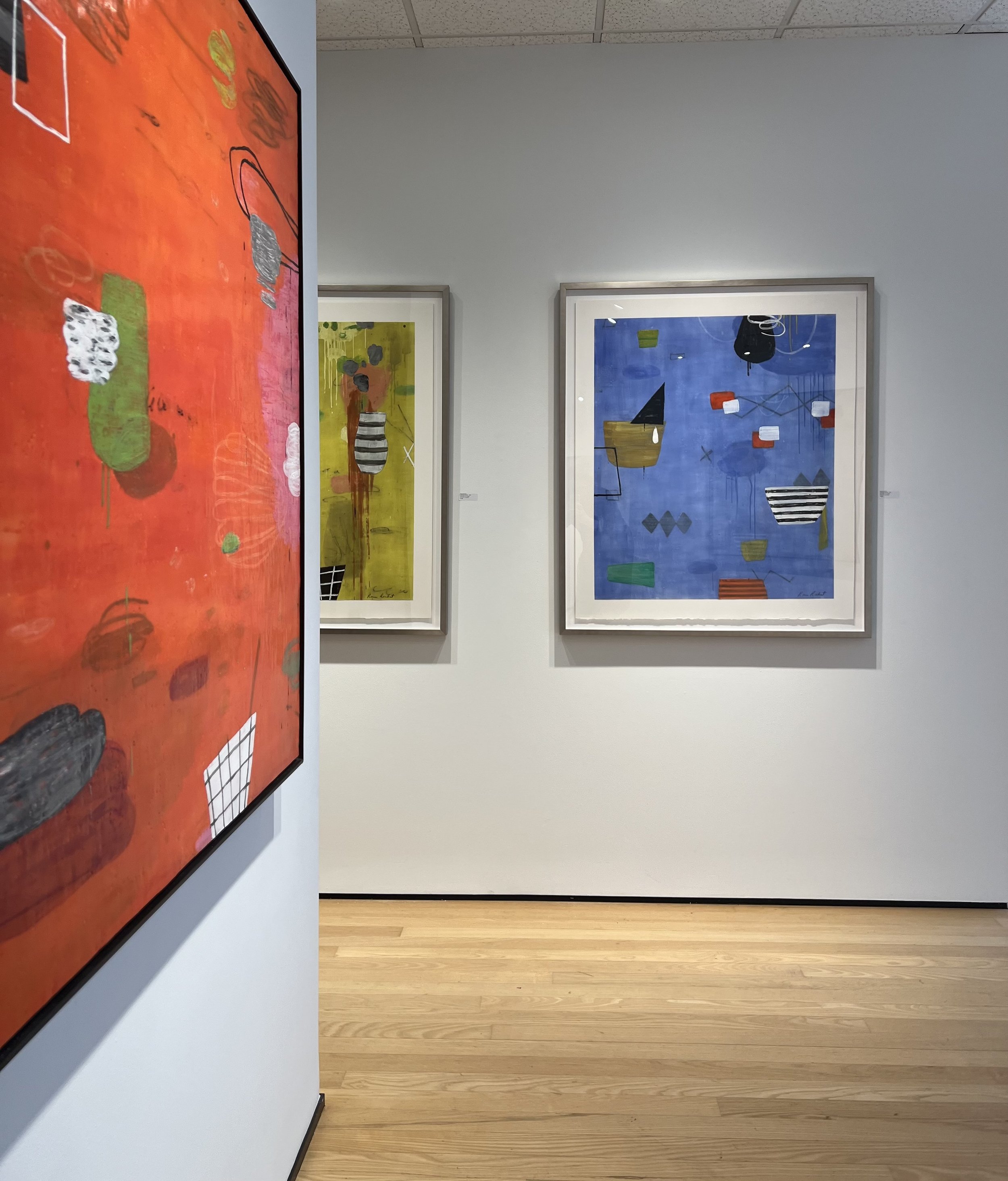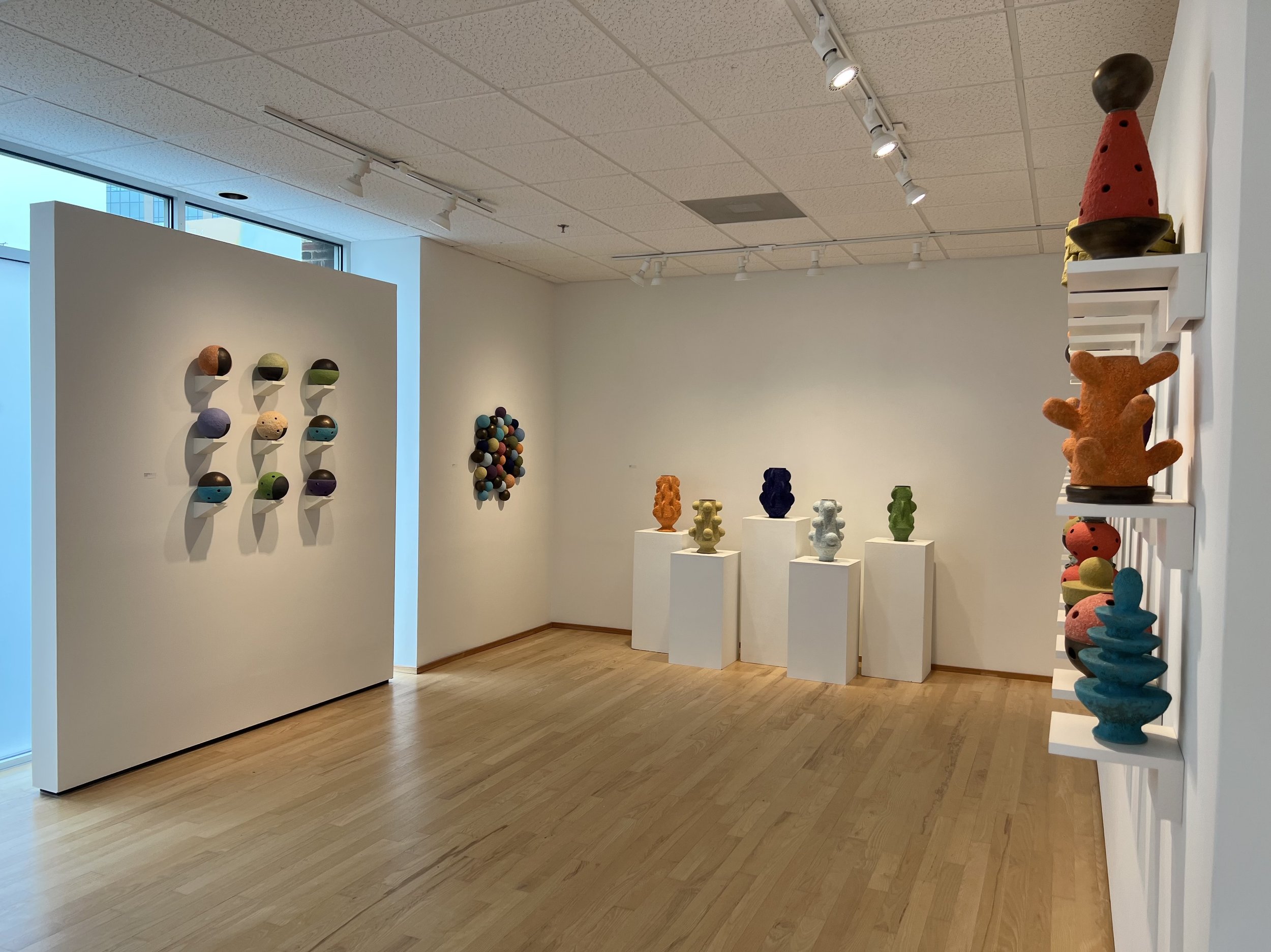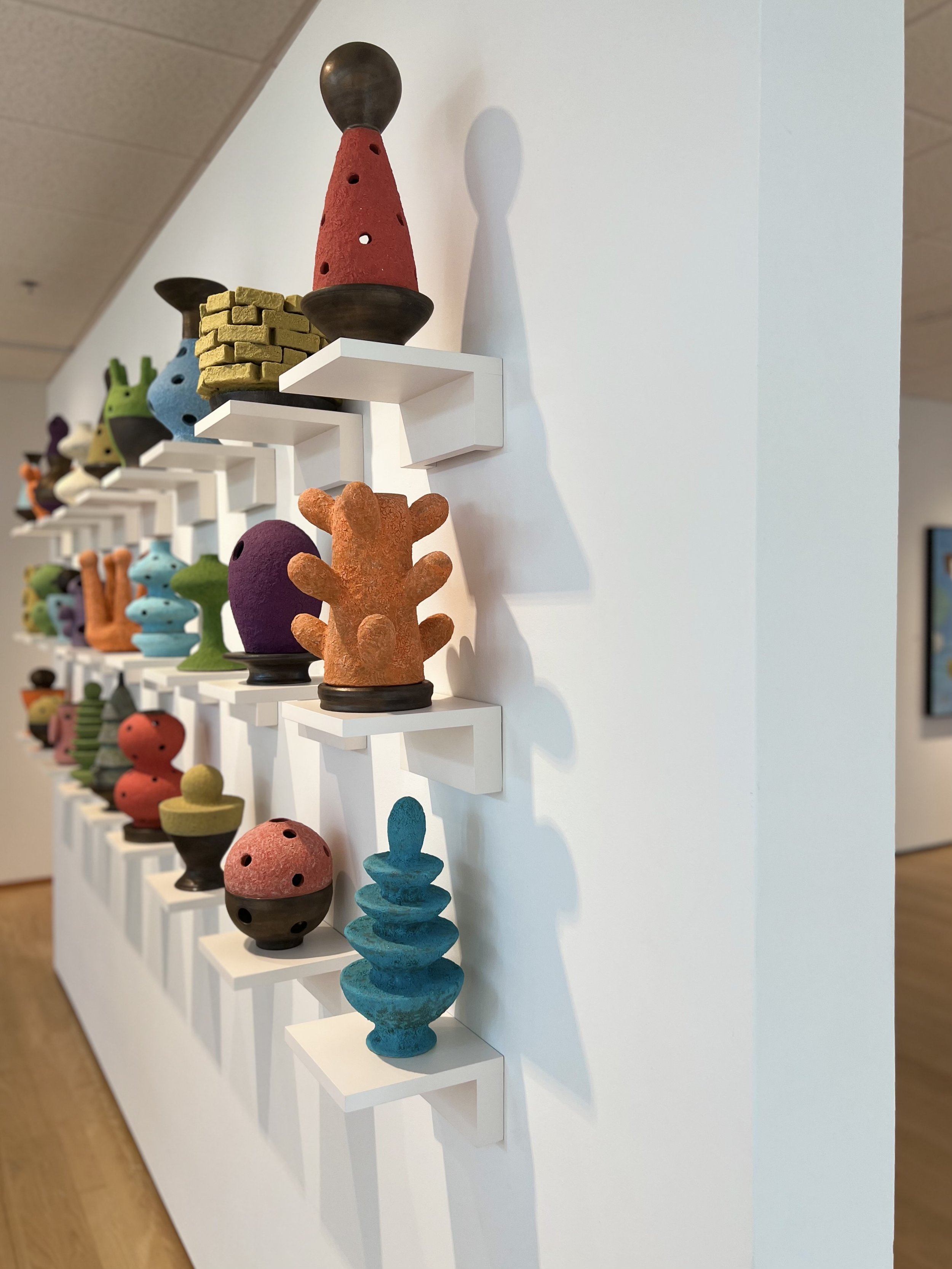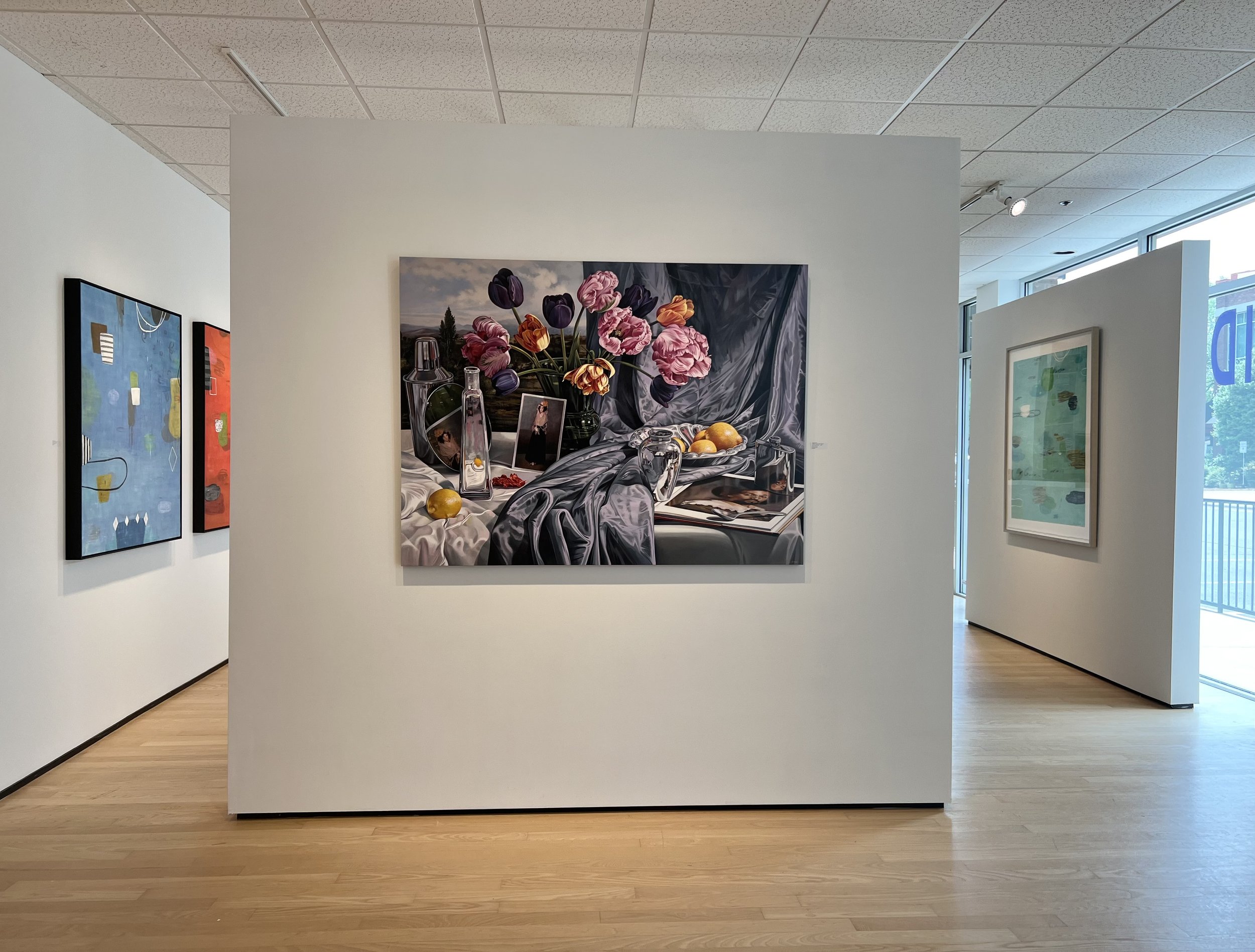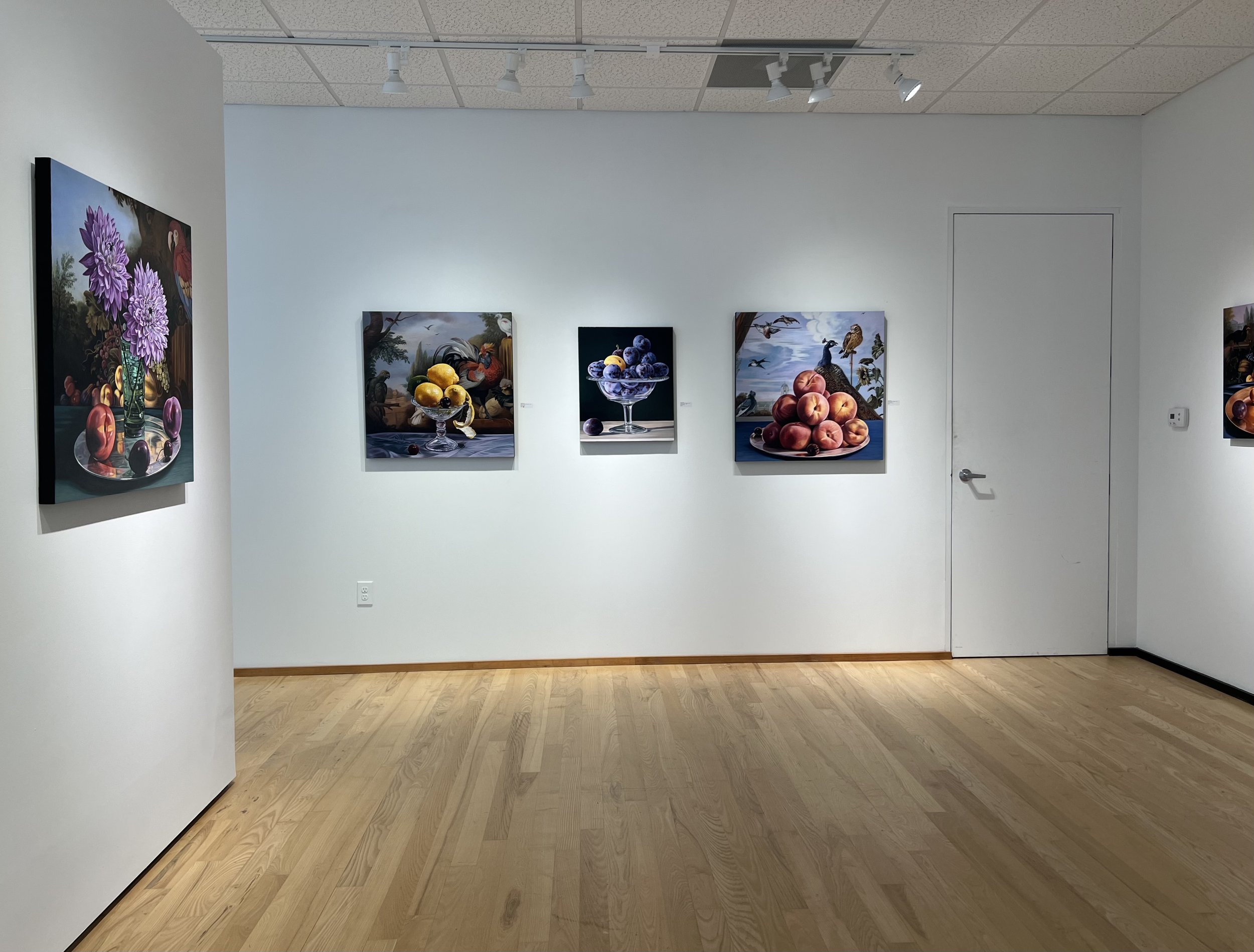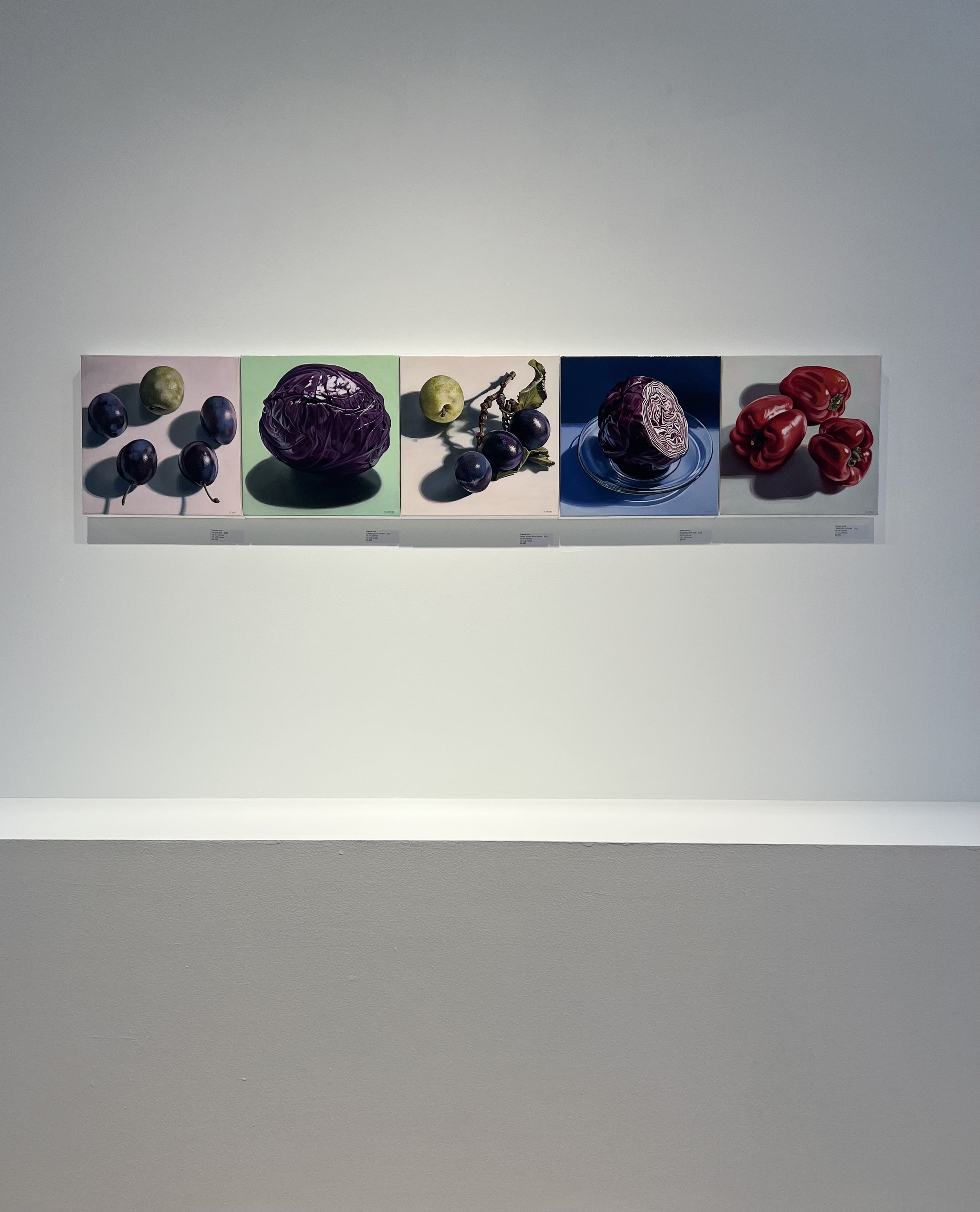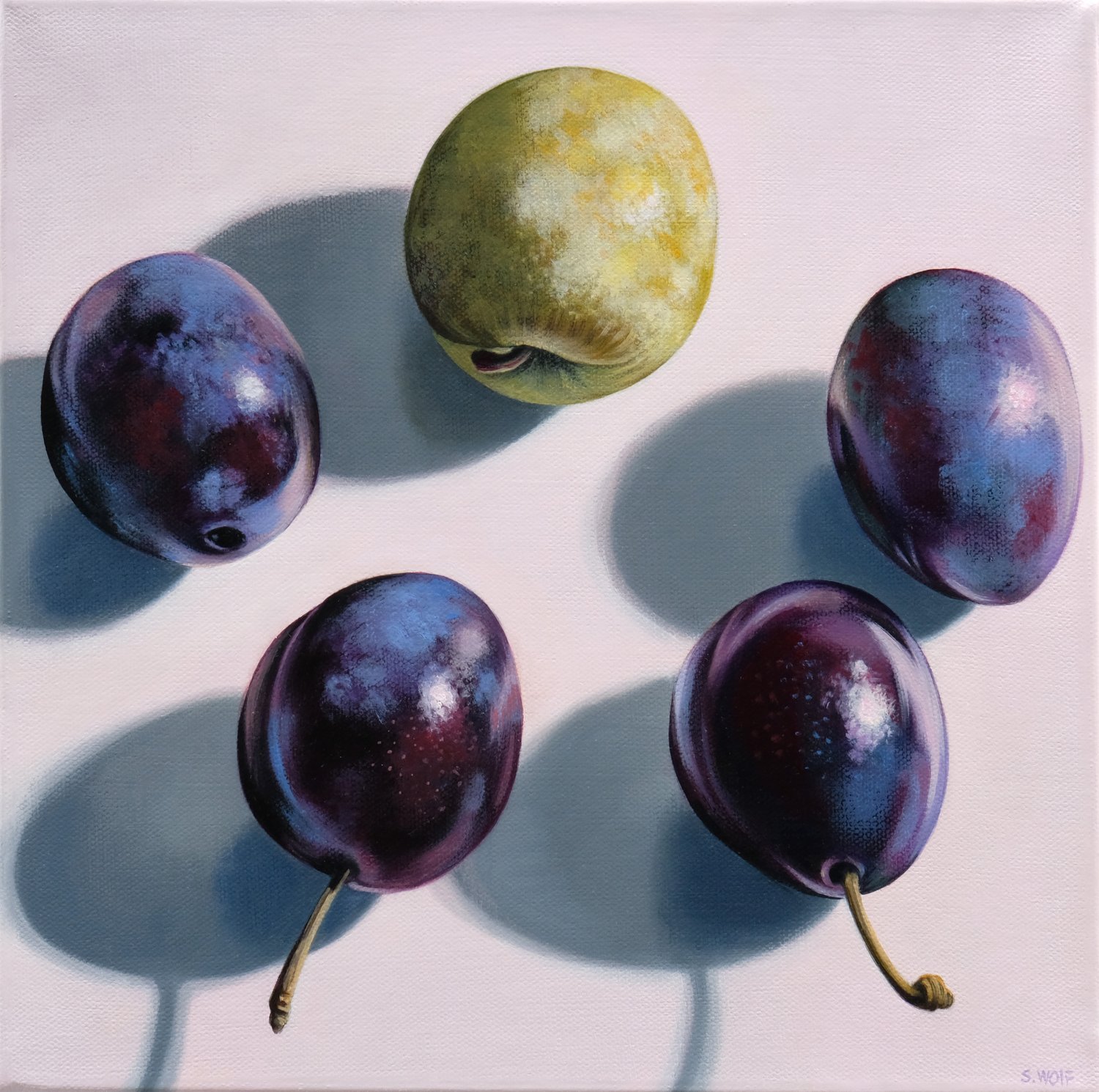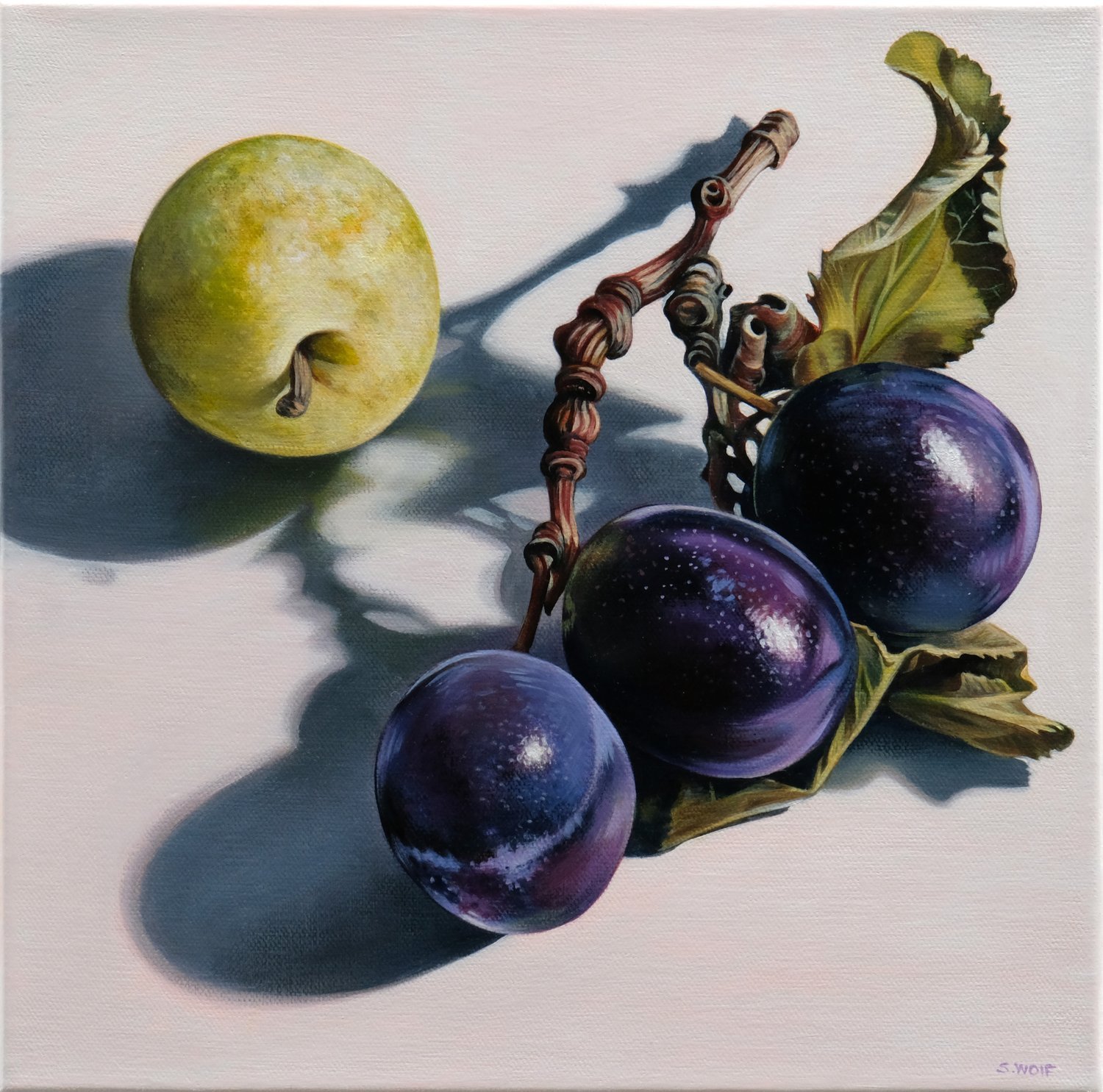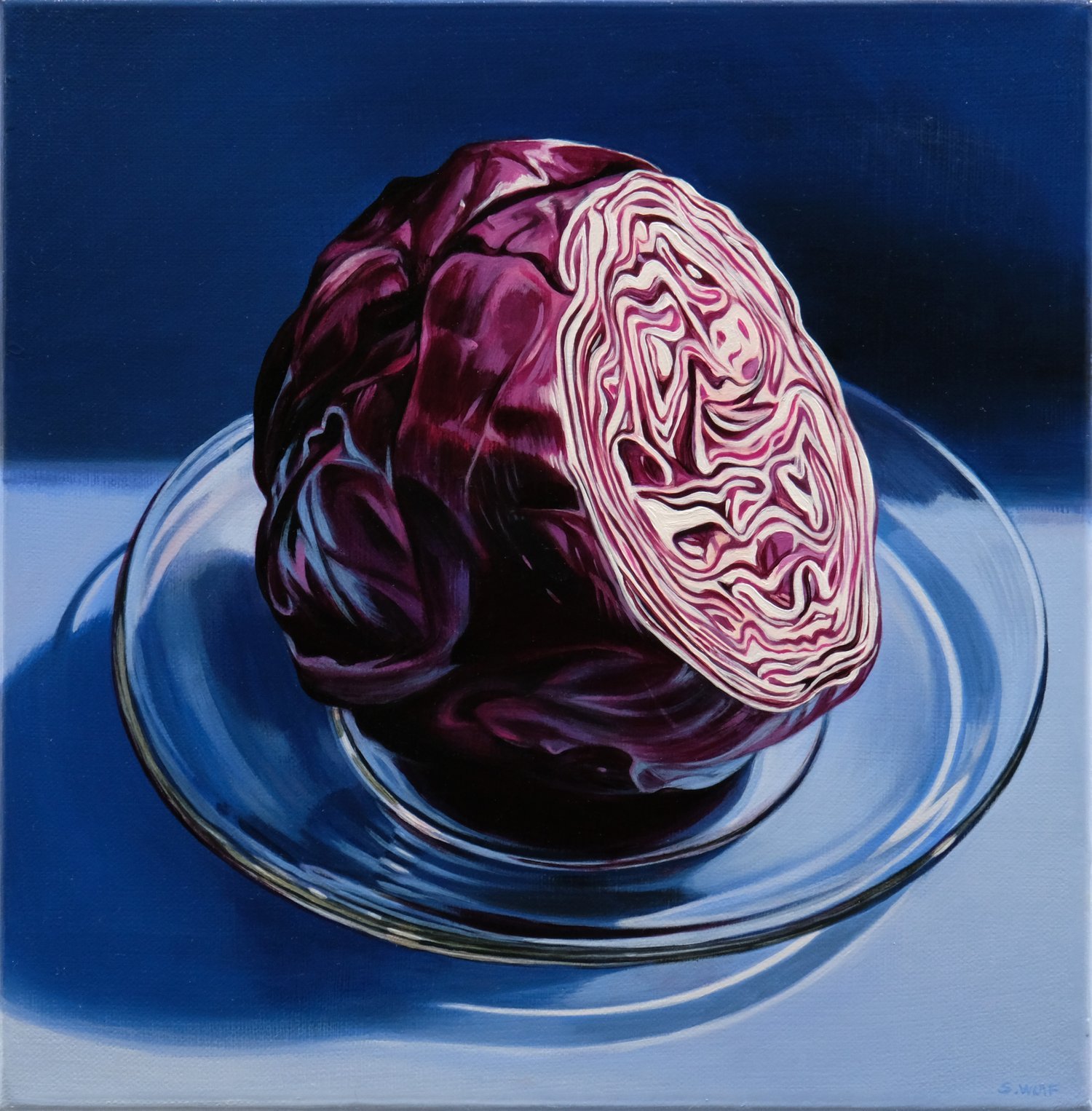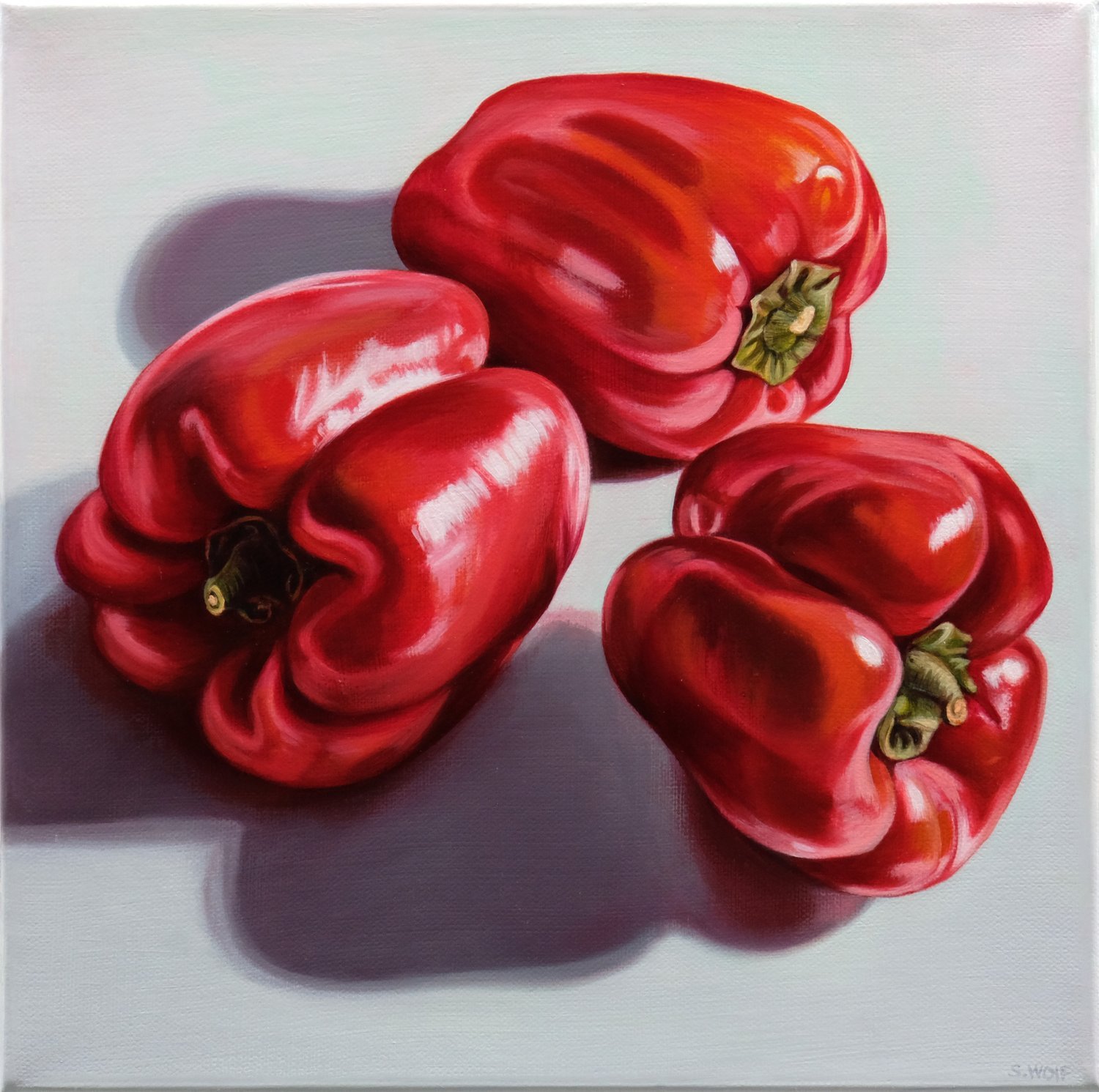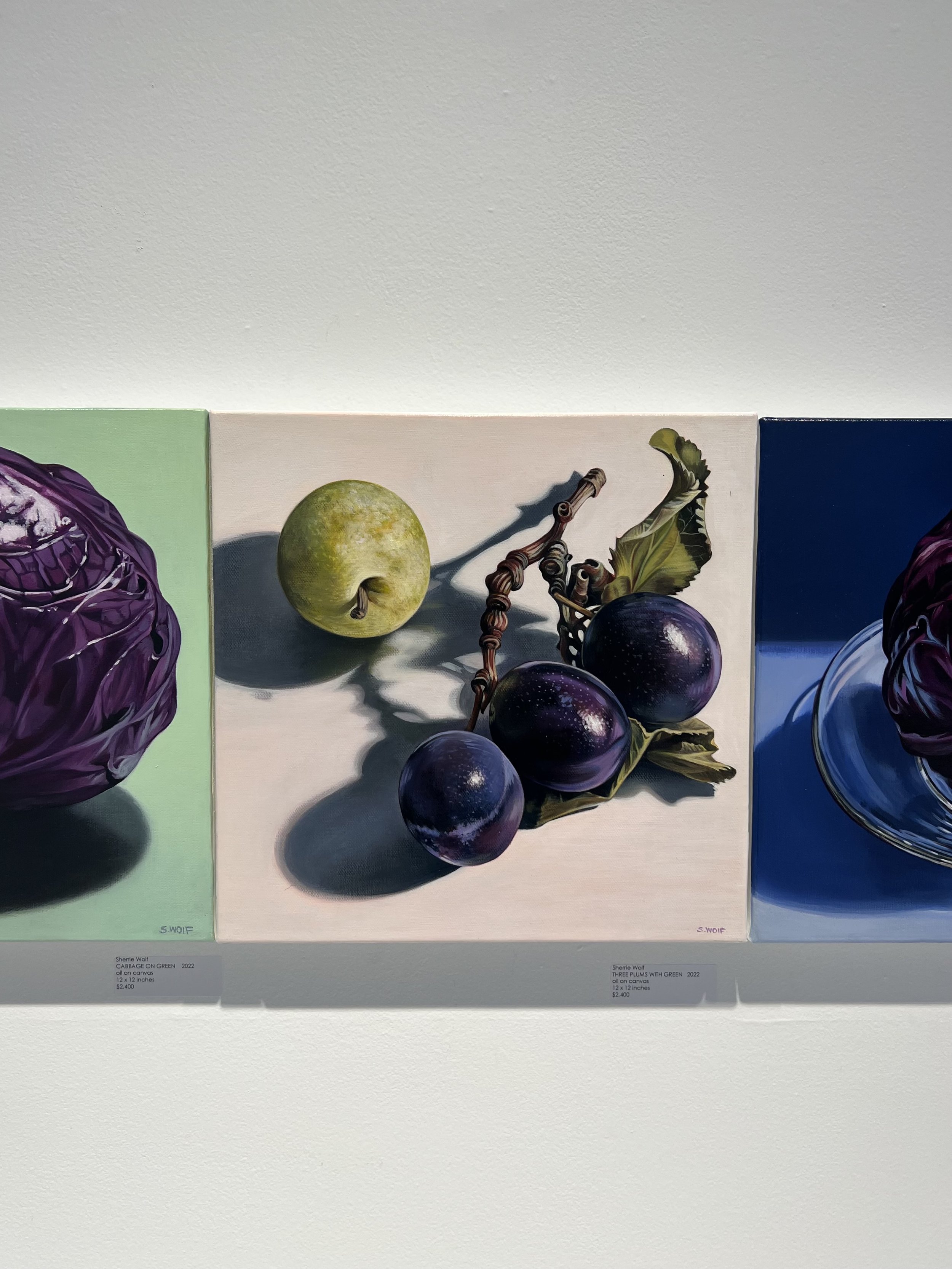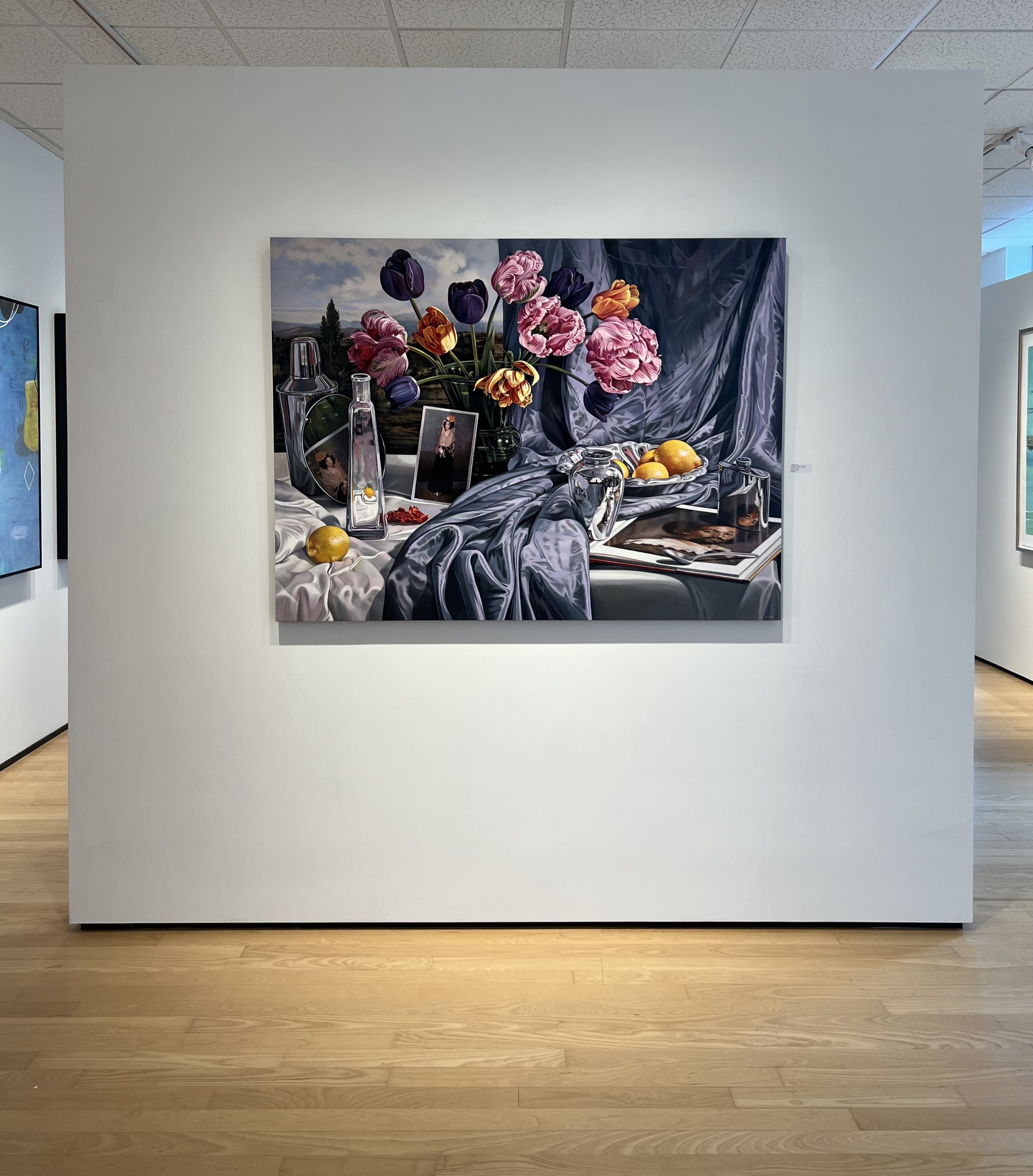may solo exhibitions are up and bursting with bold color. rana rochat, sherrie wolf and virginia scotchie have been burning the candle in their studios to create 3 new bodies of work. encaustic, oil and clay are their materials respectively. one thing they share in common besides being phenomenal artists is their love of vibrant color. whether it is pigment mixed into the encaustic, oil on the canvas or glazes on the clay, they weld color expertly. HBG is by appointment only. please call, dm or email the gallery to get on the schedule.
rana rochat
rana rochat received her bfa from rhode island school of design and currently lives in atlanta. working in the encaustic medium, rana rochat’s paintings aim to capture the delicate balance between order and chaos, reason and spontaneity. these earthy encaustic paintings result from this search and take place within the richly layered surfaces of vividly colored wax and transparent layers. the sense of depth is built into the encaustic paintings through the gradual addition of forms and textures. swirls, lines, and drips are formed within the luminous layers of each painting.
“my idea is that explicit narratives tend to overshadow intuition, gut feelings and the profound experience of mystery and joy that a painting has the potential to provide. my forms and marks, with their apparent weight, particular vitality, and inertia live in an environment i try to render luminous and transparent. i inscribe, blot, stroke, scrape and drip. the primary focus is to convey rhythm and cadence through color, line, and forms. as such, they are purely expressive or lyrical, with no other intended narration. my paintings are there for viewers to run their mind free.
my most recent paintings are moving toward a desire for increased openness, letting color and space within the piece play a more prominent role in achieving a balanced and lively visual environment, where forms, line and marks coexist. my focus is on the complex relationship between forms, marks, color and depth; how they interact to form and balance the painting. the encaustic medium involves a lot of scraping through multiple layers of wax. the final product is what remains, getting to the essence of the piece.”
virginia scotchie is a ceramic artist and area head of ceramics at the university of south carolina in columbia, south carolina. she holds a bfa in ceramics from unc-chapel hill and in 1985 completed her master of fine arts at alfred university in new york.
virginia exhibits her work extensively throughout the united states and abroad, and has received numerous awards including the sydney meyer fund International ceramics premiere award from the shepparton museum in victoria, australia. she has lectured internationally on her work and been an artist in residence in taiwan, italy, australia and the netherlands. her clay forms reside in many public and private collections and reviews about her work appear in prestigious ceramic publications.
“recent work has dealt with the relationships of whole forms to that of their components. the act of taking apart and putting back together has contributed to the accumulation of a personal library of fragmented images. my current interest is in the exploration of new forms derived from rearranging fragments of disparate dissected objects.
with this new body of work, i have continued my on-going visual investigation of man-made and natural objects. usually these consist of small things; ordinary in many ways, but possessing a visual quirkiness that pulls me to them. in some cases, i am not familiar with the particular purpose, function or origin of the original object. often this lack of information allows me to see the object in a clearer light.
in some of the pieces, i have “borrowed” fragments of personal objects that have been passed on to me from a family member. usually these are things that have only sentimental value: an old pipe of my fathers, a funnel from my mother’s kitchen or an old bulb from the family christmas tree. a recent object that falls into this category is a handmade wooden tool that was fashioned by my italian grandfather to plant his garden. slender and pointed with a stump of a side handle this small tool fit the hand of my grandfather and served him well. for me it not only holds visual intrigue but also a connection to my memory of him and the things he loved.
the worn, crusty surfaces on many of the pieces are created to give a sense of how time acts to make and unmake a form. this process can be seen in both natural and manmade objects.
while drawn from specific sources of interpretation, the work in this exhibit is primarily abstract and formal. form, surface and color take precedent over any perceived emotional content. while the work may trigger a visual memory of familiar objects, the viewer is encouraged to have a range of interpretations.”
sherrie wolf was born in portland, oregon in 1952 where she resides and paints today. she studied art at the chelsea college of art, london, england earning a ma in printmaking. wolf went on to receive a bfa in painting at the museum art school, pacific northwest college of art. she uses the classic paintings by old masters as a backdrop for her own still life compositions. sherrie arranges fresh fruit and flowers in the foreground and allows the older paintings to hover behind.
"I have always been a still-life painter. my images openly play with the fact that art is artifice. in recent years, i have arranged objects in front of excerpts from old master paintings. earlier in my career, while imitating 19th century american trompe l’oil and 17th century dutch still-life traditions in subject matter and formal elements of composition, i explored contrived or discovered relationships between seemingly unrelated objects. mirrors or other formal objects often reflected the contemporary clutter of my studio. light, shadow and three-dimensional spatial relationships played important roles, and i often used nontraditional perspectives, such as looking straight down on the still life arrangement. a mong the subject matter, there would be an open book or a card portraying an image from a historical painting. in time, these excerpts became more prominent, and eventually i filled the entire background with a quotation from an old master painting. this connected me to a history of reinterpretation and artistic borrowing prevalent among artists. my images have evolved from a love of art history and a desire to present multiple levels of expression to my viewer."
“painting parallels world history and is never past its prime. i seek to position my own experiences in the present, yet with respectful and curious references to the past. my still life paintings evolve out of my passion for arranging objects. i delight in the objects themselves, as well as the spaces between and within the objects. i marvel at their beauty, and i enjoy making visual and conceptual associations between objects in a form of viewable alliteration. my compositions are theatrical, as if the setting is a stage on which drama is being performed. my current portraits reflect my 2012 series of close-up faces from important historical paintings. capturing facial expression is challenging and the outward gaze can make the observer feel vulnerable. my still life arrangements combining articles of beauty and, dare I say, vanitas, invite the contemporary viewer to enter the painting and begin to look more closely. throughout the history of art, i observe a cyclical human nature in which emotions, experiences, and events tend to repeat. we can learn so much by viewing ourselves in the larger context of history. we can recognize a commonality that connects one generation to another, one era to another. my hope is to learn from our past by looking at it intensely. I paint with oil on canvas over an acrylic ground. my 2015 series of hand-colored prints used etching and photogravure. i also work in watercolor, occasionally departing from my richly saturated palette by painting in black and white. over the past decade, my work has evolved in scale and intensity. in particular, i have made some very large self-portraits based on historical figures in painting. for example, i envisioned myself as the subject in charles peale’s the artist in his museum (1822). a frequent subject in my studio practice is still life arrangements set before references to historical paintings. again, the size of my canvases and the complexity of the still life arrangements are ever-increasing. this year i was honored by the jordan schnitzer family foundation, which published a 148-page retrospective monograph on my work. this experience, especially the opportunity to view the arc of my past four+ decades as an artist, has given me the opportunity to reflect on how my oeuvre has simultaneously changed, while some elements have remained constant. my technical skills have improved and, while there are obvious through lines that connect my latest work with earlier works, my work has become more elaborate and intellectually vigorous. ”

